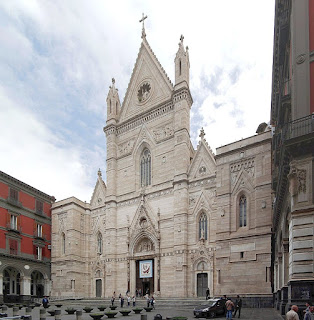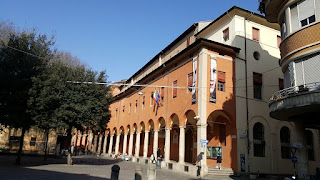Bolognese artist who idealised Raphael
 |
| Guido Reni: a self-portrait executed in about 1603, currently in the Palazzo Barberini in Rome |
He was to become a dominant figure in the Bolognese school of painting, which emerged under the influence of the Carracci, a family of painters in Bologna. He was held in high regard because of the classical idealism of his portrayals of mythological and religious subjects.
Although his father, Daniele, wanted him to follow in his footsteps as a musician, Guido Reni passionately wanted to become an artist and was apprenticed to the Flemish painter Denis Calvaert when he was 10 years old. He focused on studying the works of Raphael, who, for the rest of his life, remained his ideal.
Reni went on to enter the academy led by Ludovico Carracci, the Accademia degli Incamminati - The academy of the newly-embarked - in Bologna. He was received into the guild of painters in the city in 1599 when he was nearly 24.
After this he divided his time between his studios in Bologna and Rome.
One of his most famous works, Crucifixion of St Peter, which is now in the Vatican Museum in Rome, was painted for Cardinal Aldobrandini in 1605.
 |
| Reni's dramatic depiction of the Crucifixion of St Peter (1605) |
Reni travelled to Naples in 1622 to paint frescoes on the ceiling of the chapel of San Gennaro in the Cathedral.
In 1630, the Barberini family commissioned from Reni a painting of the Archangel Michael for the Church of Santa Maria della Concezione dei Cappuccini. There was a rumour that Reni had represented Satan, crushed under St Michael’s foot, with the facial features of Cardinal Giovanni Battista Pamphili, in revenge for a slight he had experienced from him.
Reni’s unique style was to paint religious and mythological subjects in light, soft colours, posing the figures gracefully, as in Atalanta and Hippomenes, executed in 1625.
Ancient Greek sculptures and the frescoes of Raphael were the main inspiration for his type of art.
He became one of the most famous painters of his day in Europe and was the model for other Italian Baroque artists who came later.
Reni died, aged 66, in 1642 in Bologna. He was buried in the Rosary Chapel of the Basilica of San Domenico. The painter Elisabetta Sirani, whose father had been Reni’s pupil, and who was considered by many to have been the artistic reincarnation of Reni, was later interred in the same tomb.
 |
| Reni painted frescoes in the Naples Duomo, also known as the Cattedrale di San Gernnaro |
The Duomo in Naples, in Via Duomo, off Via Tribunali, was built over the ruins of two earlier Christian churches for Charles I of Anjou at the end of the 13th century. One of the main attractions inside is the Royal Chapel of the Treasure of San Gennaro, which contains Reni’s frescoes, along with many other precious works of art. The Duomo is also sometimes referred to as Cattedrale di San Gennaro. It is open to the public from 8.30am to 1.30pm and 2.30 to 8pm, Monday to Saturday, and 8.30am to 1.30pm and 4.30 to 7.30pm on Sundays.
| The Basilica of San Domenico in Bologna, where Reni is buried, contains several important works of art |
Guido Reni is buried in the Rosary Chapel of the 13th century Basilica of San Domenico in Piazza San Domenico in Bologna. The church is close to the Archiginnasio, once the main building of the University of Bologna. Behind the red-brick façade of the church, which was added as recently as 1910, lies a treasure house of art including works by Pisano, Michelangelo, Iacopo da Bologna and Guido Reni himself. In the Rosary Chapel, the most important work is the Mystery of the Rosary, a group of paintings worked on by Lodovico Carracci, Bartolomeo Cesi, Denis Calvaert, Lavinia Fontana, Guido Reni and Domenichino. The artist Elisabetta Sirani was later interred in the same tomb as Guido Reni.
More reading:
Elisabetta Sirani - talented young painter whose sudden death shocked Bologna
How Annibale Carracci made his mark in Rome
Domenichino - the Bolognese master who rivalled Raphaal
Also on this day:
1333: Florence devastated by catastrophic floods
1737: The inauguration of Teatro San Carlo in Naples
1964: The birth of crime writer Sandrone Dazieri
Home



